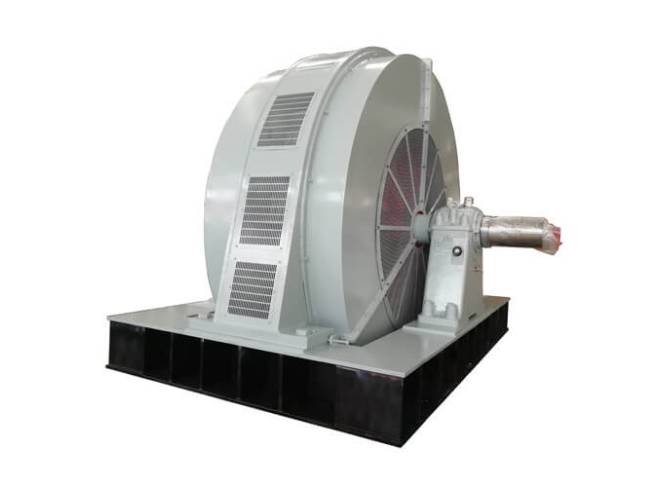Synchronous motors and Induction Motors are the two most widely used types of AC motors. The structure of a synchronous motor is similar to an alternator. The same synchronous motor can be used as a synchronous motor or an alternator. Synchronous motors have a wide range of applications, usually with a rated power of 150kW ~ 15MW and a speed range of 150 ~ 1800rpm.
A synchronous motor, like any other motor, consists of a stator and a rotor. The stator core is made of thin silicon and insulated by a surface coating to reduce eddy current and hysteresis losses. There are axial slots inside the stator, in which there are three-phase stator windings. The stator is wound with a three-phase winding, and the specific number of poles of the winding is equal to the number of poles of the rotor.
The rotors of synchronous motors are mostly salient poles. The direct current is supplied to the rotor winding through the slip ring. Direct current excites the rotor windings and produces magnetic poles. In some cases, permanent magnets can also be used.

Synchronous Motor
The number of poles of the stator winding is similar to that of the rotor. It is powered by the alternating current of a Three-Phase Synchronous Motor. The three-phase AC power source generates a rotating magnetic field in the stator. The rotor winding is the feed and DC power supply, magnetizing the rotor
Now, the stator poles rotate at a synchronous speed. If the position of the rotor makes the N pole of the rotor close to the N pole of the stator, the poles of the stator and the rotor will repel each other, and the generated torque will rotate counterclockwise.
The stator poles rotate at a synchronous speed and quickly rotate around the poles and exchange positions. But soon, the rotor can no longer rotate at the same angle. In this case, the magnetic poles of the stator will attract the magnetic poles of the rotor, and the generated torque will be clockwise.
Therefore, the rotor will endure fast reverse torque and the motor will not start.
However, if the rotor rotates at the synchronous speed of the stator under the action of external force, and the rotor magnetic field is excited near the synchronous speed, the magnetic poles of the stator will continue to attract the opposite magnetic poles of the rotor. The rotor will now be subjected to unidirectional torque. The relative poles of the stator and rotor will lock each other, and the rotor will rotate at a synchronized speed.
The Synchronous Motors will run at synchronous speed or not run at all.
The only way to change its speed is to change its power frequency.
The synchronous motor cannot start automatically. They need external force to get them close to synchronous speed.
They can work at any power factor, including lag and lead. Therefore, the synchronous motor can be used to improve the power factor.
Since the synchronous motor can run at leading and lagging power factors, it can be used to improve the power factor. In the power system where static capacitors cannot be used, connect a synchronous motor with no load and high power factor.
It is suitable for occasions requiring low speed and high power. Such as rolling mills, chippers, mixers, pumps, pumps, compressors, etc.
Copyright © ZCL Electric Motor Technology Co., Ltd. All Rights Reserved | Sitemap | Powered by 